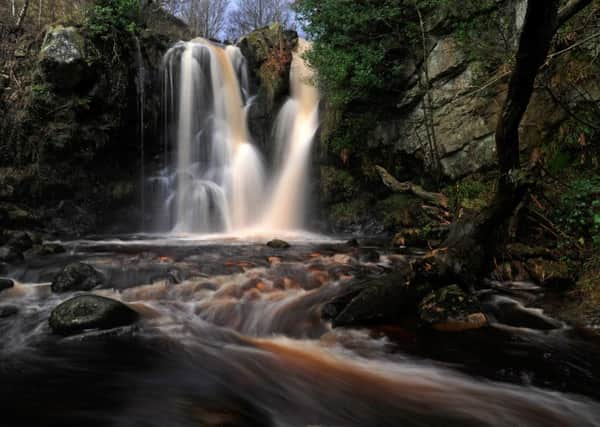Picture Post: Quiet valley rescued from desolation by nature


This hidden waterfall in the Valley of Desolation lies just below the footpath which leads from Bolton Abbey up to Simon’s Seat, the rocky outcrop thought to be named after druid leader Simon Magus, who improbably claimed to be one of the Three Wise Men.
The Valley of Desolation was so-called after the great storm of 1826 which whipped across North Yorkshire, felling trees and taking out much of the area’s plant life. However, Yorkshire’s flora and fauna are made of stern stuff and while it took a while, the natural foliage did eventually return.
Advertisement
Hide AdAdvertisement
Hide AdToday it is one of Yorkshire’s best wildlife habitats for miles around with otters, woodpeckers and buzzards regularly spotted on the estate. In spring, the nearby Strid Wood is home to a carpet of bluebells and wild garlic, while in the summer it’s the turn of yarrow and yellow pimpernel.
One of the oldest trees on the estate is the 800-year-old Laund Oak. It is thought to have been named after John of Laund who was the Prior from 1286 to 1330 and in the 16th century the Laund Oak marked the point where the Forests of Barden and Knaresborough met.
However, the tree that most visitors make a beeline for is Bolton Abbey’s money tree. Following another storm, this time in the 1980s, foresters returned to work to find of the ancient trees had blown over.
Pulling it to the side of the path, they left it to naturally break down, providing not just an important habitat for insects and invertebrates, but also a perfect blank canvas for a money tree, a tradition which dates back to pagan times.
Advertisement
Hide AdAdvertisement
Hide AdToday, dozens of coins have been pressed into the soft bark and according to folklore it is believed to have health-giving properties. As an old legend has it “any illness you are suffering will leave you when you force money into the wood”.
That may not be true, but it does belie that old adage that money doesn’t grow on trees.
Technical details: Nikon D3s, 17-35mm Nikkor lens, 1 sec @f11, ASA 200
Picture: Bruce Rollinson